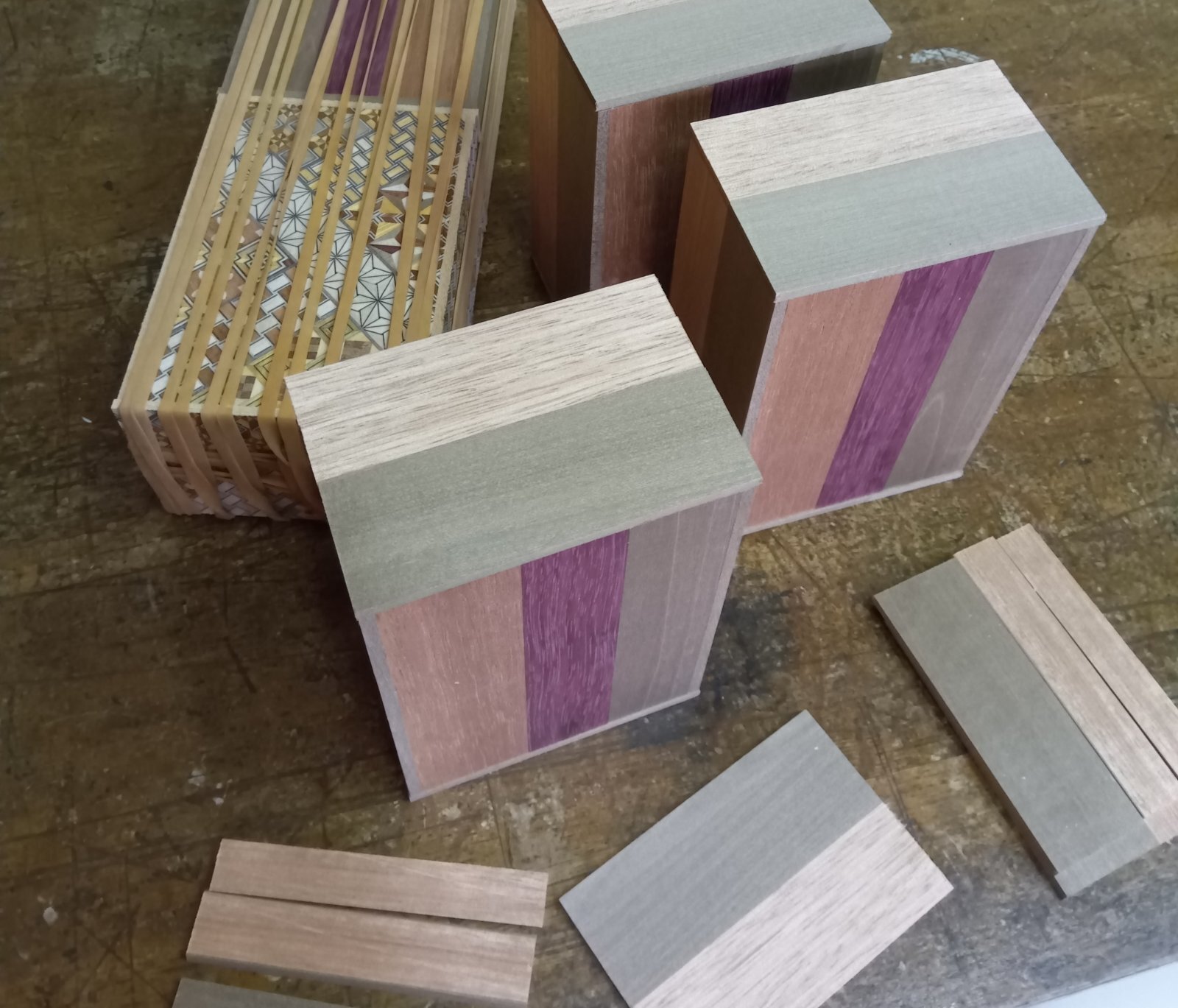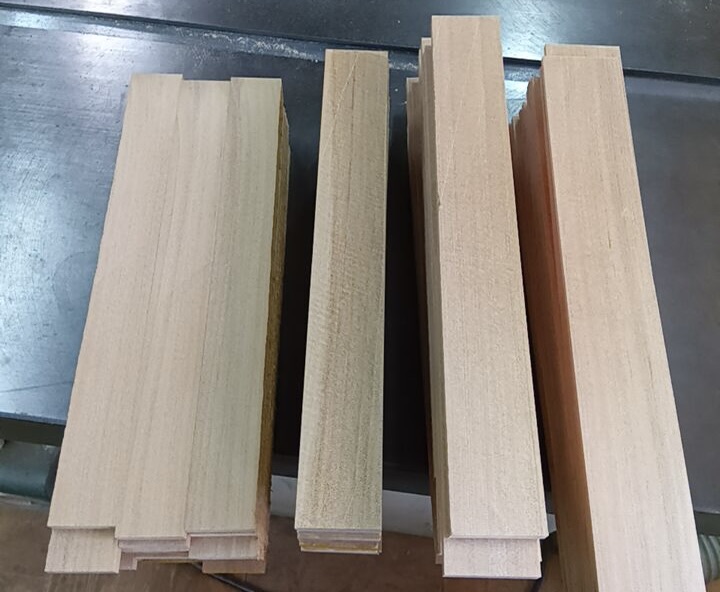Drawer natural wood type
This morning was quite cool, almost chilly. The temperature must have been around 15 degrees Celsius. It suddenly feels like autumn. The rain from yesterday has stopped, and with the humidity now around 60%, I was able to finish attaching the final yosegi panel to the sliding side (aruki side) of the 5-sun Drawer Japanese puzzle box that I’ve been working on (photo).
As I mentioned before, this current project includes not only the traditional yosegi designs but also four boxes with solid wood designs. This time, they turned out like the ones in the photo😁 I kept it simple by using only three types of wood for the outer panels. In the photo, it may seem like there are two types of beige (brown?) wood, but they are both the same Nyatoh wood. Even with the same wood, the color can vary significantly depending on the part, and so can the hardness. The darker areas are noticeably harder. Nyatoh's softer parts are quite easy to work with, but the harder parts can be a bit tricky. It's rare to find a wood that has such a big difference in hardness within the same material. However, I think this contrast in color has created a nice visual effect this time.
The side panels, as shown in the photo, are made from Nyatoh and Hoo wood. I debated which of the two should go on top (towards the top panel), but this time I decided to place the Nyatoh wood on the upper side. I feel that having the Nyatoh on top gives the box a brighter appearance. Both are excellent types of wood, but lately, I've been particularly fond of designs that highlight the Nyatoh wood.
This is more of a structural detail, but the wood used on the lower side of the side panels (Hoo wood in this case) ends up having less surface area for adhesion when attached to the 7-step mechanism side. As a result, much of it remains unfixed, making it prone to warping. If it warps, a gap may form between the bottom panel and the side. Therefore, it’s important to choose a wood with stable grain and less tendency to warp. For this reason, I thought it would be better to have Hoo wood on the lower side. I feel that Hoo wood is more stable in texture compared to Nyatoh.
In addition to that, today I prepared the structural materials for my next project, which is the 4-sun boxes. The wood in the photo will be enough to create the structural parts for around 30 of these 4-sun puzzle boxes (12 or14 steps). I plan to work on this task next week.
As I mentioned before, this current project includes not only the traditional yosegi designs but also four boxes with solid wood designs. This time, they turned out like the ones in the photo😁 I kept it simple by using only three types of wood for the outer panels. In the photo, it may seem like there are two types of beige (brown?) wood, but they are both the same Nyatoh wood. Even with the same wood, the color can vary significantly depending on the part, and so can the hardness. The darker areas are noticeably harder. Nyatoh's softer parts are quite easy to work with, but the harder parts can be a bit tricky. It's rare to find a wood that has such a big difference in hardness within the same material. However, I think this contrast in color has created a nice visual effect this time.
The side panels, as shown in the photo, are made from Nyatoh and Hoo wood. I debated which of the two should go on top (towards the top panel), but this time I decided to place the Nyatoh wood on the upper side. I feel that having the Nyatoh on top gives the box a brighter appearance. Both are excellent types of wood, but lately, I've been particularly fond of designs that highlight the Nyatoh wood.
This is more of a structural detail, but the wood used on the lower side of the side panels (Hoo wood in this case) ends up having less surface area for adhesion when attached to the 7-step mechanism side. As a result, much of it remains unfixed, making it prone to warping. If it warps, a gap may form between the bottom panel and the side. Therefore, it’s important to choose a wood with stable grain and less tendency to warp. For this reason, I thought it would be better to have Hoo wood on the lower side. I feel that Hoo wood is more stable in texture compared to Nyatoh.
In addition to that, today I prepared the structural materials for my next project, which is the 4-sun boxes. The wood in the photo will be enough to create the structural parts for around 30 of these 4-sun puzzle boxes (12 or14 steps). I plan to work on this task next week.

